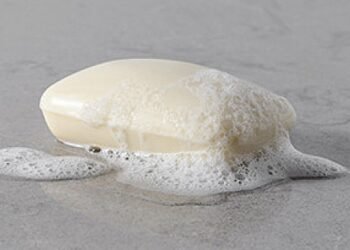Viral fever is a common ailment characterized by an increase in body temperature due to a viral infection. Viruses, which are microscopic infectious agents, invade the body’s cells and trigger an immune response. This immune response often results in fever, as the body attempts to create an environment less hospitable to the virus. Various viruses, such as influenza, the common cold, and dengue, can induce viral fever.
The causes of viral fever are predominantly linked to the transmission of viruses through infected droplets, direct contact with an infected person, or contaminated surfaces. Once the virus enters the body, it begins to multiply, prompting the immune system to respond. This response includes the release of pyrogens, substances that cause an increase in body temperature, leading to fever.
Common symptoms of viral fever include a high temperature, chills, body aches, fatigue, headaches, and sometimes a sore throat or runny nose. The fever itself can vary in intensity, often reaching up to 104°F (40°C). Additional symptoms might depend on the specific virus causing the fever. For example, dengue fever may also present with a rash and joint pain, while the flu typically includes respiratory symptoms.
It is crucial to differentiate viral fever from bacterial fever, as the treatment approaches differ significantly. Viral fevers generally do not respond to antibiotics, which are effective against bacterial infections. Moreover, viral fevers tend to resolve on their own within a week to ten days as the immune system combats the virus. Conversely, bacterial fevers often require medical intervention and antibiotics for recovery.
Despite being self-limiting, viral fever warrants medical attention if it persists beyond 10 days, or if the symptoms escalate, including severe headache, persistent vomiting, difficulty breathing, or confusion. These could indicate complications or the presence of a more serious underlying condition. Understanding the causes and symptoms of viral fever is the first step in managing it effectively at home, ensuring timely treatment and recovery.
Home Remedies to Reduce Viral Fever
When dealing with a viral fever, several effective home remedies can provide relief and help manage symptoms. One of the most crucial steps is to stay hydrated. Drinking plenty of fluids, such as water, clear broths, and herbal teas, helps to prevent dehydration and supports the body’s immune function. Herbal teas like ginger, peppermint, and chamomile are particularly beneficial due to their soothing properties and ability to alleviate discomfort.
Cold compresses can also be very effective in reducing fever. Apply a cold, damp cloth to your forehead, wrists, and ankles to draw heat away from your body. This method can provide immediate, albeit temporary, relief from high temperatures. Similarly, taking lukewarm baths can help regulate body temperature. Avoid using cold water as it can cause shivering, which might raise body temperature instead of lowering it.
Rest and sleep are fundamental for recovery. Fever is often a sign that your body is fighting off an infection, and adequate rest allows your immune system to function more efficiently. Ensure you get plenty of sleep and avoid strenuous activities to give your body the best chance to recover.
Consuming immune-boosting foods is another vital strategy. Soups and broths, especially chicken soup, are not only comforting but also help in maintaining hydration and providing essential nutrients. Adding ingredients like garlic and turmeric can enhance their immune-boosting properties. For soothing drinks, consider a warm cup of honey and lemon tea. Honey has antimicrobial properties, while lemon is rich in vitamin C, crucial for immune support.
Incorporating these home remedies into your routine can significantly aid in managing viral fever symptoms and promoting quicker recovery. While these methods are helpful, it is important to monitor the fever closely and seek medical advice if symptoms persist or worsen.
Over-the-Counter Medications and Their Use
When managing a viral fever at home, over-the-counter (OTC) medications can be an effective means to alleviate symptoms and promote comfort. Common OTC medications include acetaminophen and ibuprofen, both of which are widely recognized for their antipyretic and analgesic properties.
Acetaminophen, also known by the brand name Tylenol, is particularly effective at reducing fever and relieving mild to moderate pain. The recommended dosage for adults is 500 to 1000 milligrams every 4 to 6 hours, not to exceed 4000 milligrams per day. For children, the dosage is typically based on weight, and it is crucial to follow guidelines provided on the packaging or by a healthcare provider. While generally safe when used as directed, potential side effects of acetaminophen include liver damage, especially when taken in excessive amounts or combined with alcohol.
Ibuprofen, found in products like Advil and Motrin, also serves to reduce fever and alleviate pain and inflammation. For adults, the recommended dosage is 200 to 400 milligrams every 4 to 6 hours, with a maximum of 1200 milligrams per day unless directed otherwise by a physician. Children’s dosages are again weight-dependent and should be carefully adhered to. Ibuprofen can cause stomach irritation, ulcers, or kidney issues if used excessively or in individuals with pre-existing conditions.
It is important to recognize the appropriate scenarios for using these medications. They are most beneficial when fever causes significant discomfort or disrupts daily activities. However, if the fever is mild and manageable, some may prefer to rely on natural remedies such as hydration, rest, and the use of cool compresses. Additionally, OTC medications should not be used indiscriminately or as the sole treatment method if symptoms persist or worsen over time.
Aspirin, another common OTC medication, should be used with caution. It is generally not recommended for children or teenagers due to the risk of Reye’s syndrome, a rare but serious condition that can cause swelling in the liver and brain. For adults, aspirin can be an option for fever reduction, but it carries a risk of gastrointestinal bleeding and should be used under the guidance of a healthcare professional.
In conclusion, while OTC medications like acetaminophen and ibuprofen can be effective for managing viral fever, it is essential to use them responsibly, adhering to recommended dosages and being mindful of potential side effects. Always consider the severity of the fever and the overall health of the individual when deciding on the best course of action.
Preventive Measures to Avoid Viral Fever Infections
Preventing viral infections is paramount to maintaining good health and avoiding the discomfort and potential complications of viral fevers. One of the most effective ways to prevent viral infections is through stringent hygiene practices. Regular handwashing with soap and water for at least 20 seconds can significantly reduce the risk of contracting viruses. When soap and water are not available, using hand sanitisers with at least 60% alcohol content is a suitable alternative.
Avoiding close contact with individuals who show symptoms of viral infections is another crucial preventive measure. This includes maintaining a safe distance, avoiding sharing personal items, and using face masks when necessary. Additionally, practising good respiratory hygiene, such as covering your mouth and nose with a tissue or elbow when coughing or sneezing, helps prevent the spread of viruses.
Maintaining a robust immune system is essential to warding off viral infections. A balanced diet rich in fruits, vegetables, whole grains, and lean proteins provides the necessary nutrients to support immune function. Regular physical activity also plays a vital role in boosting the immune system. Aim for at least 150 minutes of moderate-intensity exercise each week. Adequate sleep, typically 7-9 hours per night for adults, is equally important as it allows the body to repair and regenerate, enhancing overall immunity.
Vaccinations are a critical component of viral infection prevention. Keeping up-to-date with recommended vaccines, such as the flu shot, can provide immunity against specific viruses. Consult with healthcare providers to ensure that all necessary vaccinations are administered on time.
Other preventive measures include avoiding crowded places during peak infection seasons, disinfecting frequently touched surfaces, and staying informed about the latest public health advisories. By integrating these preventive strategies into daily routines, the risk of viral infections and, consequently, viral fevers, can be significantly minimized.












